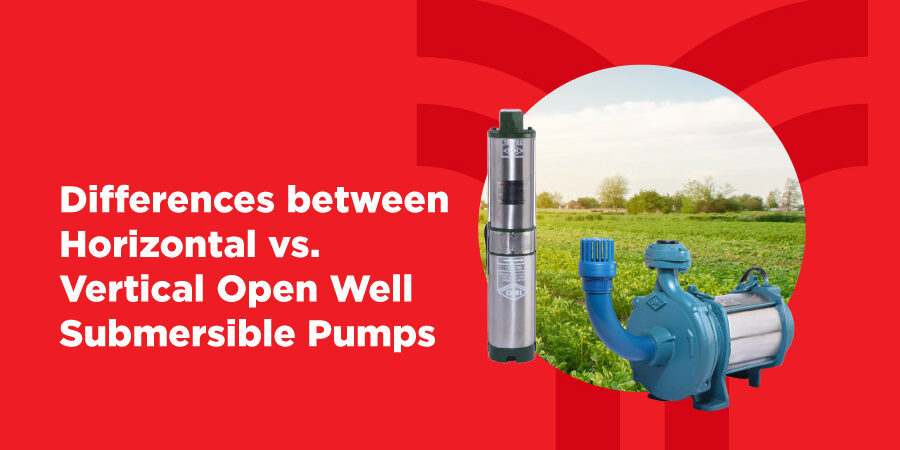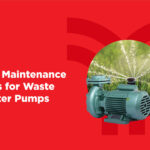Comparing Horizontal and Vertical Open Well Submersible Pumps
Introduction
Open well submersible pumps are essential tools in various applications, from agriculture to industrial use. When choosing the right pump, it’s crucial to understand the differences between horizontal and vertical open well submersible pumps. This guide explores the key differences, performance, installation, and suitability of each type to help you make an informed decision.
Design and Construction
Horizontal Open Well Submersible Pumps
Horizontal open well submersible pumps are designed with the pump shaft oriented horizontally. This design allows the pump to lay flat at the bottom of the well. Horizontal pumps are typically easier to access and maintain, as their components are more spread out and accessible.
Vertical Open Well Submersible Pumps
Vertical open well submersible pumps, on the other hand, have their pump shaft oriented vertically. This design makes them ideal for deeper wells where a more compact, vertically-oriented pump can be beneficial. Vertical pumps take up less horizontal space, making them suitable for narrow wells and confined spaces.
Performance and Efficiency
Flow Rates and Pressure
Horizontal pumps generally provide higher flow rates, making them suitable for applications requiring significant water volume. They are often used in scenarios where large amounts of water need to be moved quickly. Vertical open well submersible pumps, while also efficient, are typically better at maintaining consistent pressure, making them ideal for applications requiring steady water supply over longer periods.
Energy Consumption and Efficiency
Both horizontal and vertical pumps are designed to be energy-efficient, but their efficiency can vary depending on the application. Horizontal pumps, with their higher flow rates, may consume more energy in high-volume applications. Vertical pumps, designed for consistent pressure, tend to be more energy-efficient in steady-flow scenarios.
Installation and Maintenance
Ease of Installation for Horizontal Pumps
Horizontal pumps are generally easier to install due to their straightforward design. They can be laid flat at the bottom of the well, and their accessible components make setup relatively simple. This ease of installation also translates to easier maintenance and repairs.
Ease of Installation for Vertical Pumps
Vertical pumps, while slightly more complex to install due to their vertical orientation, offer the advantage of space efficiency. They fit well into narrow wells and confined spaces, making them a good choice for specific installations. However, their vertical design might require more careful handling during installation to ensure proper alignment and operation.
Maintenance Requirements for Both Types
Maintenance requirements for both horizontal and vertical pumps are generally similar, involving regular checks, cleaning, and part replacements as needed. However, the accessibility of horizontal pumps can make maintenance tasks easier and quicker to perform compared to vertical pumps.
Applications and Suitability
Best Uses for Horizontal Open Well Submersible Pumps
Horizontal open well submersible pumps are ideal for agricultural applications, where high flow rates are needed for irrigation and water transfer. They are also suitable for situations where easy access and maintenance are important, such as in larger open wells.
Best Uses for Vertical Open Well Submersible Pumps
Vertical open well submersible pumps are perfect for deep wells and confined spaces where a compact, vertically-oriented pump is advantageous. They are often used in domestic water supply systems, industrial applications requiring steady pressure, and scenarios where space efficiency is crucial.
Suitability for Different Environments and Needs
The choice between horizontal and vertical pumps largely depends on the specific requirements of the application. Consider factors such as the depth of the well, the volume of water needed, the available space, and the ease of maintenance when selecting the appropriate pump type.
Insights from Open Well Submersible Pump Manufacturers in Coimbatore
Industry Insights and Recommendations
Open well submersible pump manufacturers in Coimbatore emphasize the importance of choosing the right pump for the specific application. They recommend consulting with experts to understand the unique requirements of your project and selecting a pump that offers the best combination of performance, efficiency, and ease of maintenance.
Tips for Selecting the Right Pump
When selecting an open well submersible pump, consider the following tips:
- Assess the depth and width of the well
- Determine the required flow rate and pressure
- Evaluate the available space for installation
- Consider the ease of maintenance and accessibility of components
- Consult with experienced manufacturers and wholesalers for expert advice
Conclusion
In summary, both horizontal and vertical open well submersible pumps have their unique advantages and are suitable for different applications. Horizontal pumps offer high flow rates and easy maintenance, making them ideal for agricultural and large-scale applications. Vertical pumps provide consistent pressure and space efficiency, perfect for deep wells and confined spaces. By understanding these key differences and considering the specific needs of your project, you can choose the right pump to ensure optimal performance and longevity.


